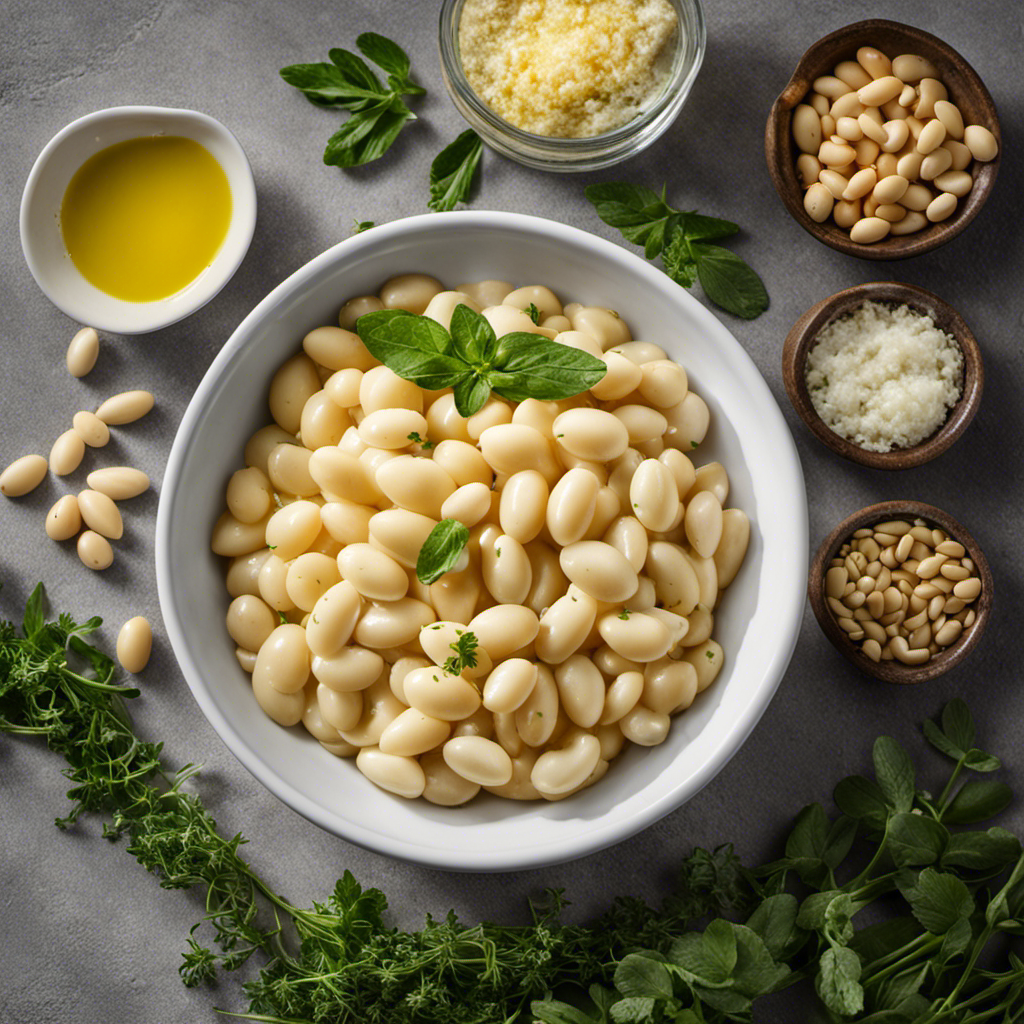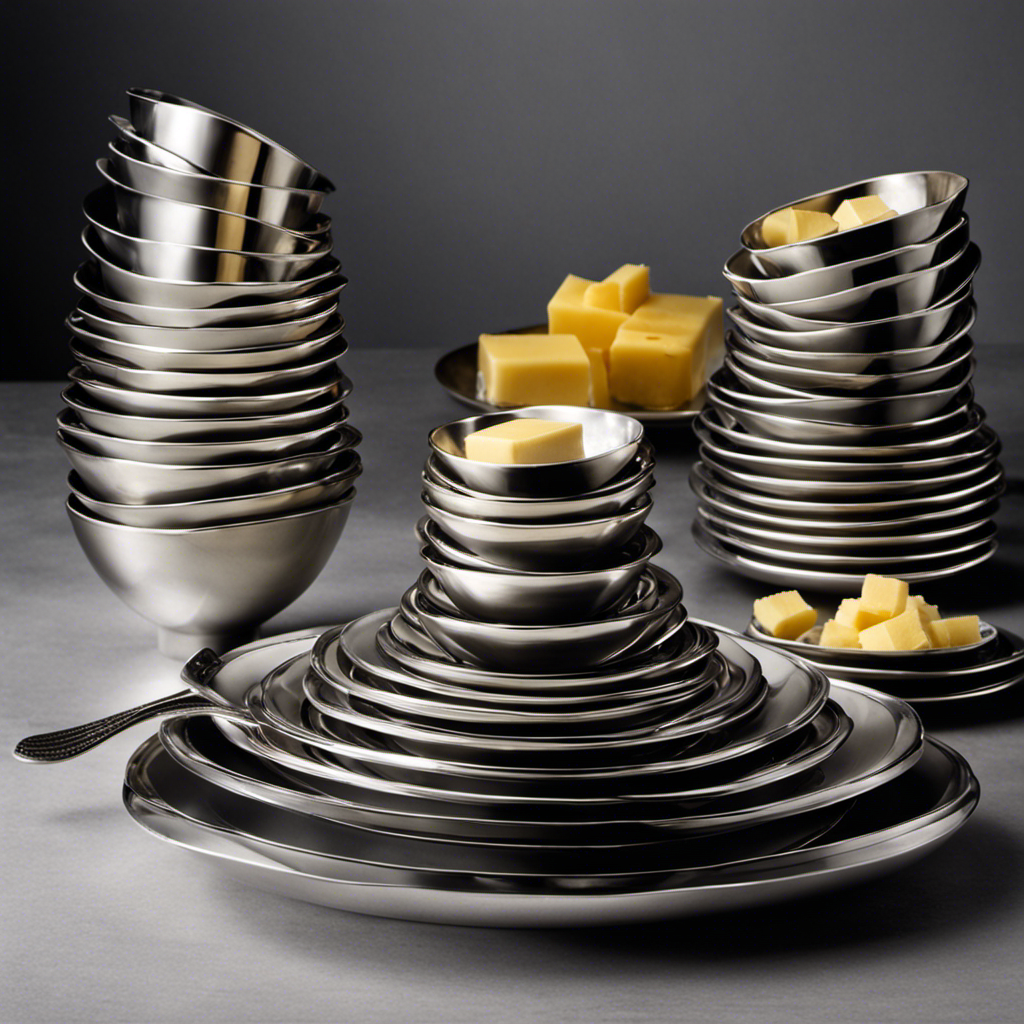When you prepare creamed leeks, you're indeed eating the butter! Start with fresh, cleaned leeks and sauté them gently in melted butter until they soften. Once they're tender, pour in heavy cream and let it simmer, creating a rich and velvety sauce. This dish not only enhances the leeks' sweet, delicate flavor but also pairs beautifully with grilled meats and fish, bringing elegance to any plate. Don't forget to top your creation with cheese or fresh herbs for an added kick. Stick around, and you'll discover more tips and tricks for perfecting this luscious side dish!
Key Takeaways
- Creamed leeks are sautéed in butter, enhancing their sweet and delicate flavor for a rich side dish.
- Using butter in the cooking process helps to soften the leeks, ensuring a tender texture.
- The combination of heavy cream and butter creates a luxurious sauce that clings to the leeks.
- Consider topping creamed leeks with shaved parmesan for an extra buttery richness.
- Enjoy creamed leeks alongside grilled meats or fish for a delightful contrast in flavors.
Understanding Leeks
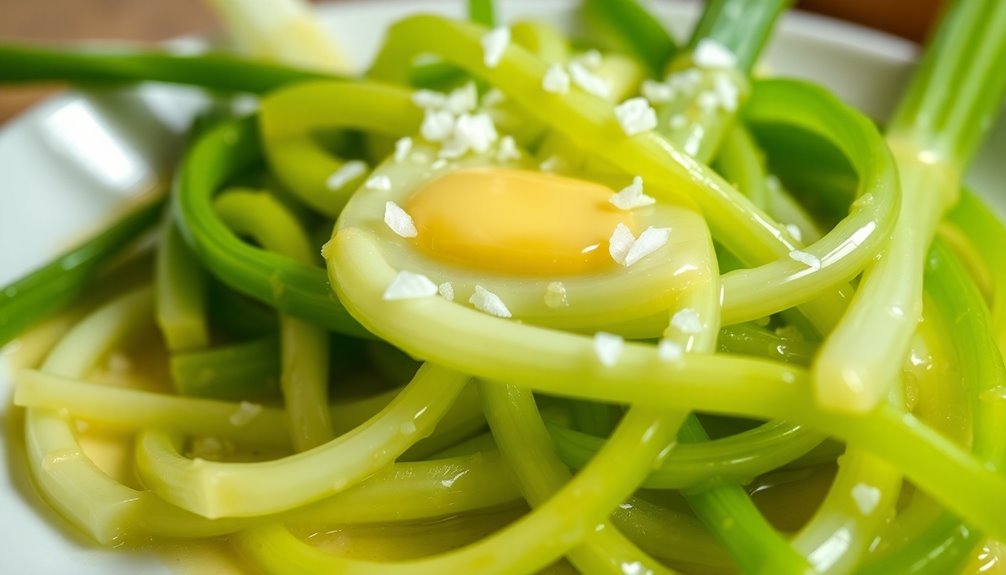
When exploring the world of leeks, you'll discover their sweet, delicate flavor and unique appearance, which resembles oversized scallions. These versatile vegetables brighten up any dish while adding a subtle earthiness.
Before you start cooking, you'll need to clean them properly, as leeks often trap sand and dirt between their layers. Trim off the dark green leaves and roots to prep them for use.
When slicing, aim for crosswise cuts on a slight diagonal to enhance their presentation. This method not only looks appealing but also helps them cook evenly.
Leeks are a fantastic base for various recipes and can elevate your culinary creations with their mild taste and satisfying texture. Enjoy experimenting with this delightful ingredient!
Preparing Creamed Leeks
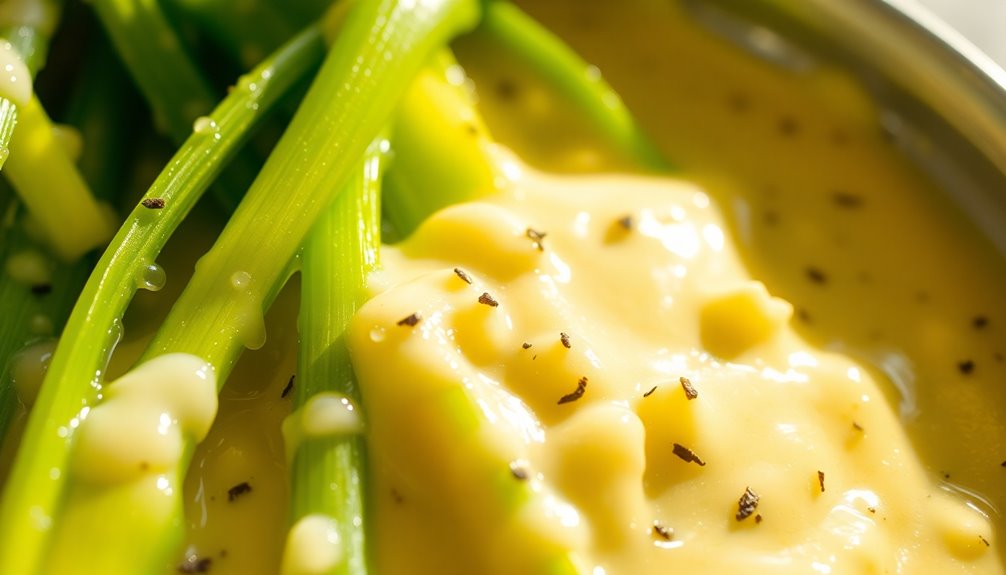
Starting with fresh leeks, you'll want to clean them thoroughly to remove any sand trapped between the layers. Trim off the dark green leaves and roots, then slice the leeks crosswise on a slight diagonal for even cooking.
Heat some butter in a skillet over medium heat and sauté the leeks, flipping them gently to maintain their shape. Cook until they're soft and starting to brown, which usually takes about 10 minutes.
Once they're tender, pour in heavy cream, letting it envelop the leeks. Continue cooking for a few minutes until everything melds beautifully.
Flavor Pairings
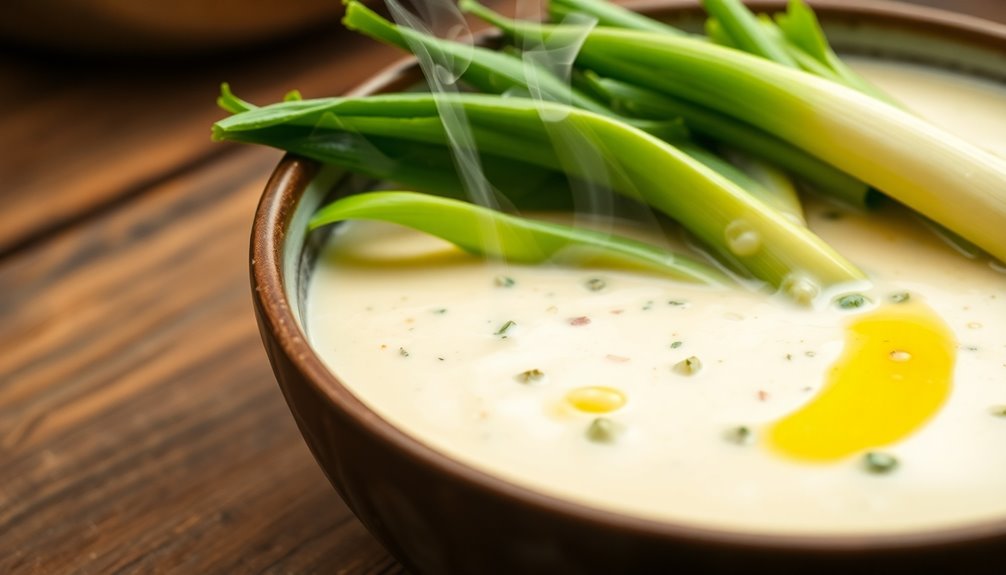
With its sweet, delicate flavor, creamed leeks can enhance a variety of dishes, making them a versatile choice in the kitchen.
Pair them with grilled meats like chicken or steak for a delightful contrast. Their richness also complements fish dishes beautifully, adding a touch of elegance.
For a vegetarian option, serve creamed leeks alongside roasted vegetables or as a filling in savory tarts. Don't forget about cheese; topping with shaved parmesan or crumbled goat cheese elevates the dish further.
You can also experiment with herbs like thyme or chives to introduce additional layers of flavor. Incorporating mindful consumption practices into your cooking can further enhance your culinary experience while promoting sustainability.
Whether you're creating a comforting side or a star ingredient, creamed leeks provide an exceptional taste that harmonizes well with many flavors.
Health Benefits
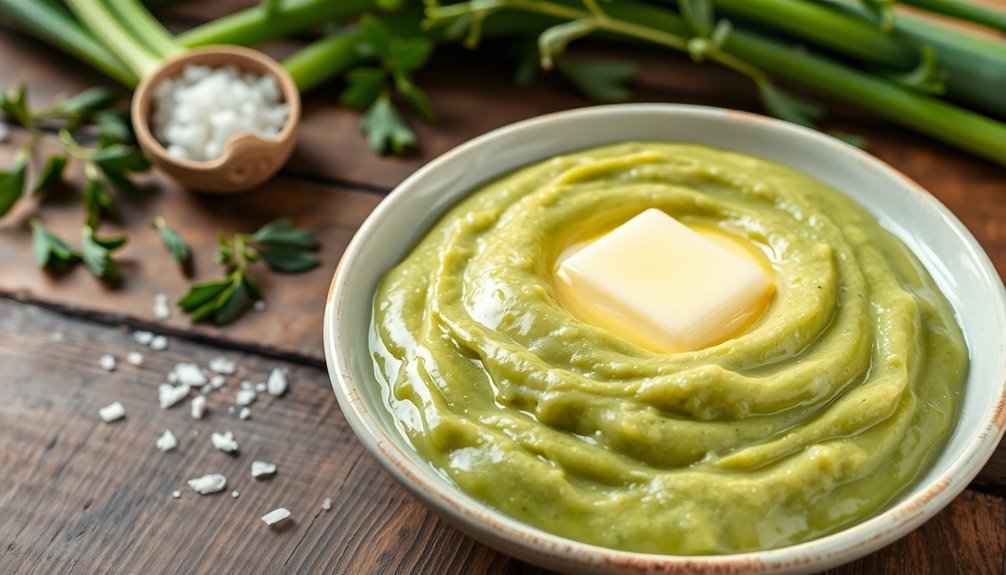
Creamed leeks not only delight the palate but also offer a range of health benefits that make them a smart addition to your diet.
These vegetables are low in calories, helping you manage your weight while enjoying a rich flavor. They're packed with vitamins, particularly vitamin K, which supports bone health. Moreover, incorporating chia seeds into your diet can complement the nutritional benefits of creamed leeks. Additionally, leeks are rich in antioxidants that help combat oxidative stress, contributing to overall well-being. The dietary fiber in leeks works synergistically with chia seeds to promote digestive health. Furthermore, the inclusion of chia seeds can enhance satiety, making it easier to control appetite and support weight management.
Additionally, leeks provide dietary fiber, promoting healthy digestion and keeping you feeling full longer. Their antioxidants help combat oxidative stress, contributing to overall well-being.
Plus, with only about 11g of net carbs per cup, they fit well into low-carb diets. Incorporating diversifying investments in your overall health strategy can further enhance well-being and nutritional balance.
Tips for Perfecting
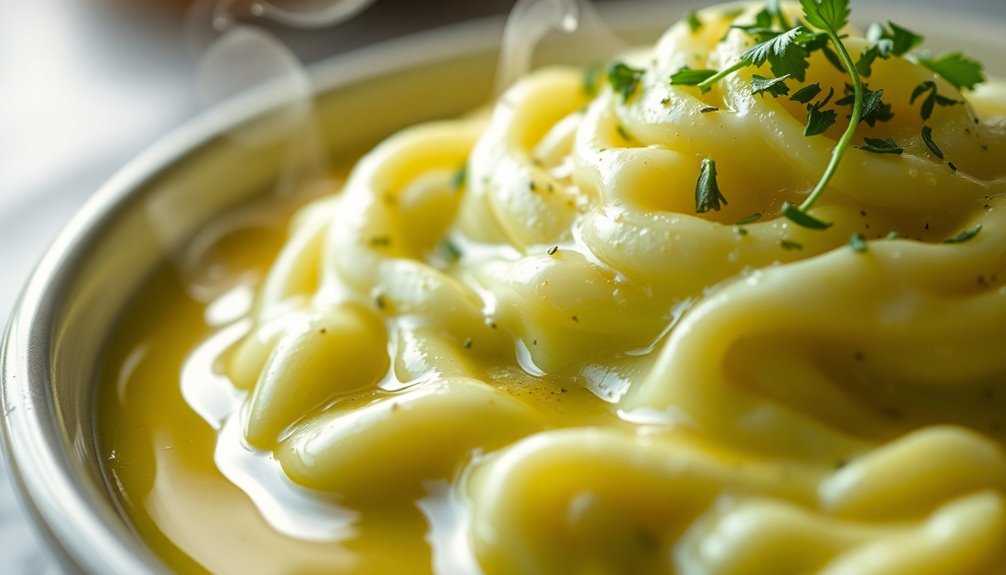
To perfect your creamed leeks, focus on the quality of the ingredients and the cooking technique.
Start with fresh, clean leeks; trim away the dark green leaves and roots. Slice the leeks crosswise on a slight diagonal for even cooking. Sauté them gently in melted butter over medium heat, flipping carefully to maintain their shape until they're soft and slightly browned.
Once you add heavy cream, let it simmer for a few minutes to meld the flavors. Don't forget to season with salt and pepper, adjusting to your taste. It's important to remember that while butter adds richness to your dish, it is high in saturated fat, so moderation is key.
For an extra touch, sprinkle shaved parmesan on top before serving. Enjoy these leeks as a versatile side dish that pairs beautifully with grilled meats or fish.
Frequently Asked Questions
Can I Substitute Leeks With Other Vegetables?
Absolutely, you can substitute leeks with other vegetables! Try using scallions for a similar flavor, or shallots for a sweeter taste.
If you're looking for a heartier option, onions work well too. Just remember to adjust the cooking times, as different veggies may soften at different rates.
Don't be afraid to experiment with other greens like green beans or asparagus, which can add unique flavors and textures to your dish.
How Long Do Cooked Leeks Last in the Fridge?
Cooked leeks can last in the fridge for about 3 to 5 days when stored properly.
Make sure you place them in an airtight container to maintain freshness.
Before you eat them, check for any signs of spoilage, like off smells or changes in texture.
If you want to extend their shelf life, consider freezing them, but remember that the texture might change once thawed.
Enjoy your leeks while they're still fresh!
Are Leeks Gluten-Free?
You might wonder if those tender, sweet leeks could pose a problem for your diet. The good news is, leeks are naturally gluten-free!
So, you can confidently enjoy them in various dishes without worry. Their delicate flavor enhances meals while keeping your meals safe for those avoiding gluten.
Just remember to double-check any sauces or seasonings you use, as they could contain gluten. Enjoy the deliciousness without hesitation!
Can I Freeze Cooked Leeks?
Yes, you can freeze cooked leeks!
Just make sure to let them cool completely after cooking.
Once cooled, portion them into freezer-safe bags or containers, removing as much air as possible.
They'll maintain their flavor and texture for about 3 to 6 months in the freezer.
When you're ready to use them, simply thaw in the refrigerator or reheat directly from frozen.
Enjoy the convenience of having cooked leeks ready for your meals!
What Are Some Common Recipes Using Leeks?
When you're looking for recipes using leeks, consider sautéing them with butter for a simple side dish.
You can also add them to soups for a rich flavor or incorporate them in quiches for a savory breakfast.
Leeks pair beautifully with pasta, adding depth to your favorite sauces.
Try roasting them as a side for grilled meats, or blend them into a creamy leek and potato soup for a comforting meal.
Conclusion
So, why not embrace the butter and cream? After all, life's too short to skip the indulgence! If you've made it this far, you've probably realized that creamed leeks aren't just a side dish; they're a culinary love letter to your taste buds. Serve them up, bask in the oohs and aahs from your guests, and remember: calories don't count when you're enjoying the finer things in life—like buttery, creamy leeks that make your heart sing!





